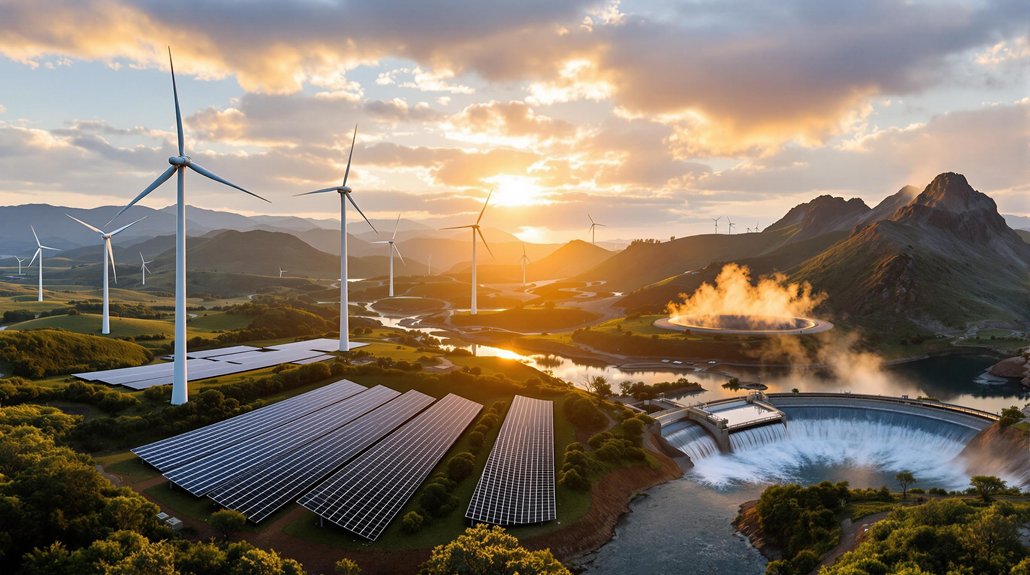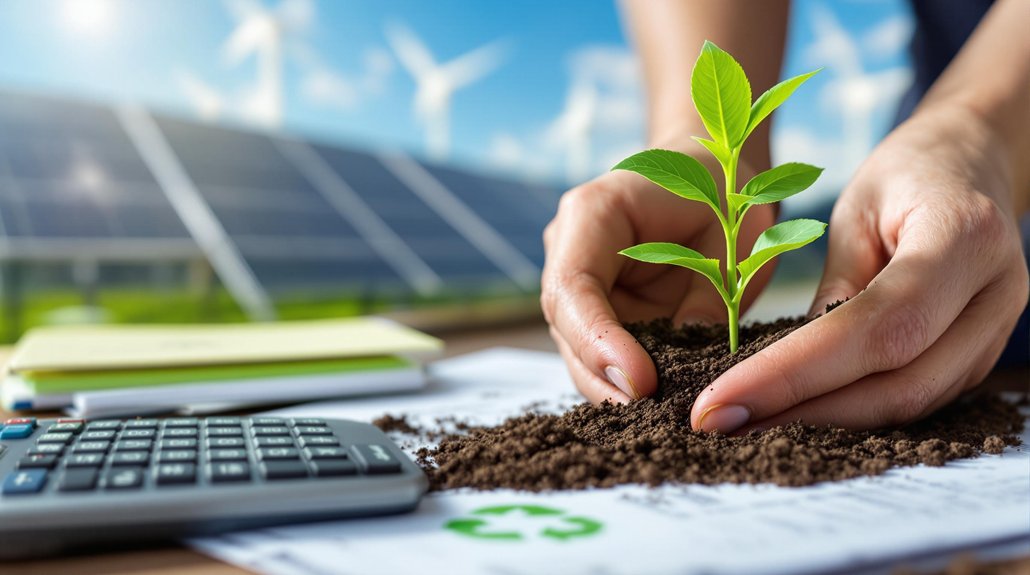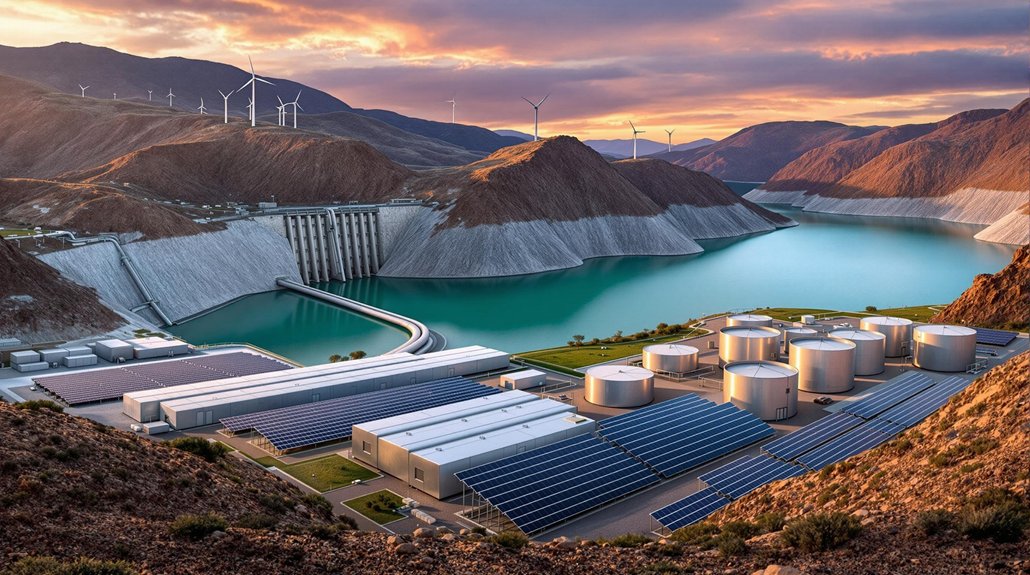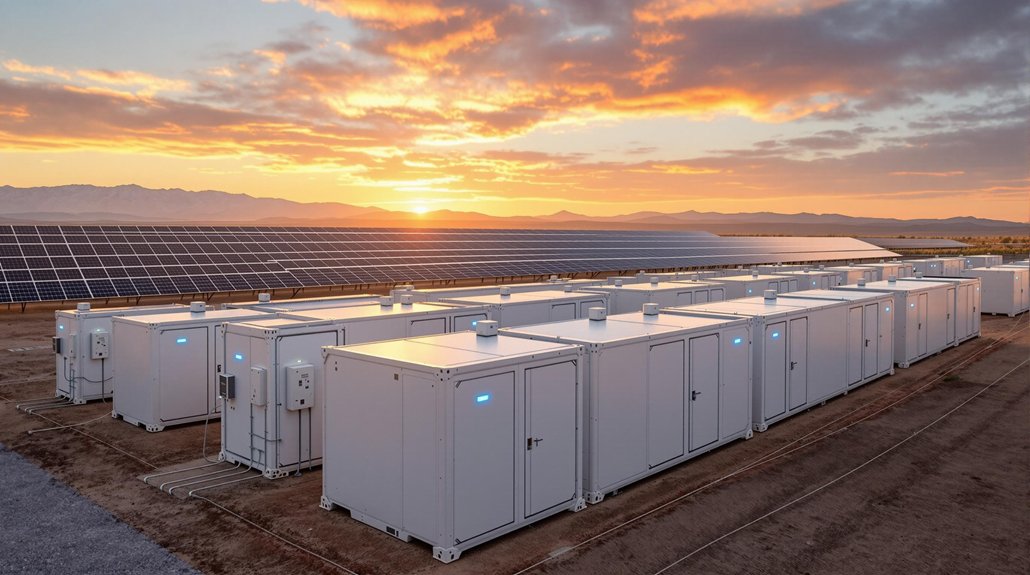Sustainable power sources generate electricity without depleting natural resources or causing significant pollution. Solar energy, now 90% cheaper since 2009, captures sunlight through photovoltaic cells. Wind power harnesses air movement with turbines, contributing 6% of global electricity. Hydropower, using flowing water, remains the largest renewable source at 16% of worldwide electricity. Geothermal, biomass, and emerging ocean energy technologies round out today’s growing alternative energy portfolio. The expanding renewable landscape offers promising solutions for our energy future.
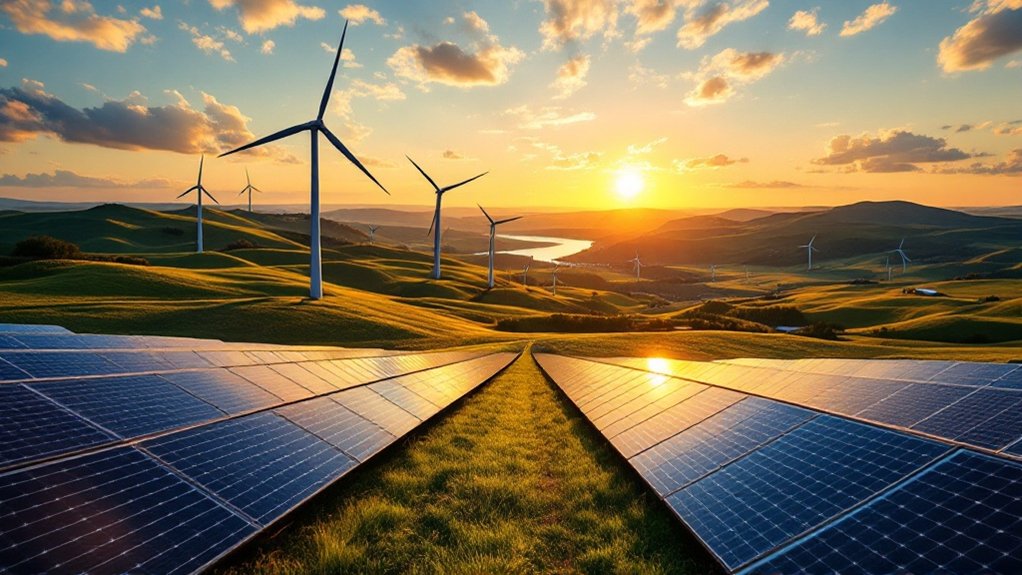
Numerous sustainable power sources are reshaping the global energy landscape today. These alternatives to fossil fuels help reduce carbon emissions while meeting growing electricity demands.
Solar energy, the fastest growing renewable source, converts sunlight into electricity using photovoltaic cells. The cost of solar has dropped by 90% since 2009, making it more affordable for homes and businesses. Solar panels can be installed on rooftops or in large farms, and they provided 3.3% of global electricity in 2022.
Solar energy’s remarkable price drop transforms it from luxury to practical solution for homes worldwide.
Wind energy captures air movement with turbines to generate power. It’s available in two forms: onshore and offshore wind farms. Wind energy costs have fallen 70% in the last decade and now provide 6% of the world’s electricity. However, it’s an intermittent source that depends on weather conditions. Wind power has emerged as the fastest-growing renewable energy source globally, making it crucial for the energy transition.
Hydropower remains the largest renewable electricity source globally. It uses flowing water to spin turbines and generates 16% of the world’s electricity. Unlike solar and wind, hydropower can provide consistent baseload power, though it raises concerns about impacts on river ecosystems.
Geothermal energy taps heat from within the Earth and offers stable, continuous power. It currently produces 0.4% of global electricity but is limited to regions with accessible geothermal resources. Geothermal energy has the advantage of being essentially unlimited in supply as it uses heat continuously generated from the Earth’s core.
Biomass energy uses organic matter as fuel and contributes 2% of worldwide electricity. It can provide on-demand power but raises questions about sustainability and air quality. These renewable energy sources help minimize greenhouse gas emissions while ensuring long-term energy sustainability for future generations.
Ocean energy from tides and waves remains in early development stages with about 500 MW of global capacity. While it offers predictable generation, it faces high costs and technical challenges.
Hydrogen isn’t an energy source but a potential carrier and storage medium. It can be produced using renewable electricity and emits no pollution when used in fuel cells, though it’s currently expensive and requires new infrastructure.
These sustainable options continue to advance as technology improves and costs decrease, offering promising alternatives to traditional fossil fuels for our energy future.
Frequently Asked Questions
How Much Does Transitioning to Renewable Energy Cost?
Shifting to renewable energy requires massive investment. Global estimates show about $110 trillion needed between 2021-2050, averaging $3.5 trillion annually. That’s 1.3% of projected global GDP.
In the U.S., costs range from $4.5-5.7 trillion. Major expenses include $1.5 trillion for wind and solar capacity, $2 trillion for battery storage, and $700 billion for transmission line expansion.
Despite high upfront costs, renewable energy prices continue falling rapidly.
Can Alternative Energy Meet Global Electricity Demands?
Alternative energy can meet global electricity demands, but faces significant challenges. Current projections show renewables met 30% of global demand in 2023.
With electricity needs expected to double by 2050, massive infrastructure development is needed. Solar and wind are growing rapidly, with solar forecast to meet 50% of demand growth through 2027.
However, grid updates, energy storage solutions, and policy support remain critical hurdles to full conversion.
What Jobs Are Created by Sustainable Energy Sectors?
Sustainable energy sectors are creating diverse job opportunities worldwide.
Solar energy employs photovoltaic installers and manufacturing technicians.
Wind power needs turbine technicians and offshore project managers.
Energy efficiency sectors hire building auditors and smart grid specialists.
Bioenergy creates positions for plant operators and research scientists.
These industries don’t just provide clean power—they’re opening new career paths that didn’t exist a generation ago.
How Long Do Renewable Energy Installations Typically Last?
Renewable energy installations have varying lifespans.
Solar panels typically last 25-30 years, with production continuing at reduced efficiency for up to 40+ years.
Wind turbines generally operate for 20-25 years.
Hydroelectric dams have impressive longevity, functioning for 50-100+ years.
Geothermal plants can run for 30-50 years.
Most systems require periodic component replacements, like inverters for solar (10-15 years) and turbine blades for wind (10-20 years).
Which Countries Lead in Alternative Energy Adoption?
Several countries are leading in alternative energy adoption. Norway powers almost all its electricity (98.3%) with renewables.
Brazil, New Zealand, Denmark, and Sweden follow closely, all exceeding 69% renewable electricity.
China produces the most total renewable energy, while Uruguay and Lithuania show the fastest growth rates.
Denmark, Costa Rica, Germany, and New Zealand have set ambitious targets, with some aiming for 100% renewable electricity within the next decade.
